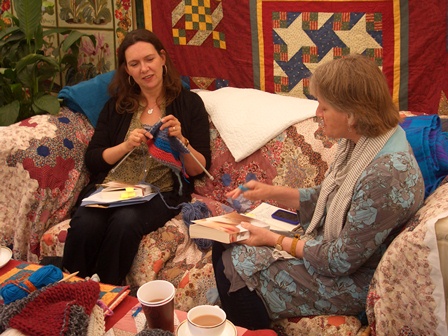This is a novel in which very little happens. Yet it is also an addictive page-turner, and written with such artistry that the reader can do little but succumb. Rarely has the mundane been so dazzling.
It opens in the first person with a litany of foul-mouthed complaints that comes as a shock to anyone familiar with Messud's usual Jamesian prose style. Here is the story of an angry woman whose explosive rage settles into a sense of threat that pulls us along with it, eager to discover its source. "I want to make my nothingness count," the narrator warns. "Don't think it's impossible."
Nora Eldridge is a "straight-A, strait-laced, good daughter" who has spent four years looking after her dying mother. Now 42 and responsible for her father, she is an elementary school teacher in Cambridge, Massachusetts; a frustrated artist dragging abandoned hopes, with no partner and a vivid life of the mind. In her "calcifying spinsterdom", she is the ubiquitous "woman upstairs": accommodating, anonymous, almost invisible.
We return to the period five years before, when Nora is becoming aware of lost opportunities. Into her classroom walks eight-year-old Reza Shahid, a new pupil who instantly charms her. Reza's Lebanese father Skandar Shahid is an academic on a year's Harvard fellowship. More intriguingly, Sirena Shahid is an artist, wife, mother: everything that Nora is not. On meeting her, Nora feels the "voltage" of her presence, and an unequal friendship develops. They share a studio, where Sirena produces work on a vast scale while Nora fashions miniature dioramas requiring "hours of dollshouse labor". Nora. Doll's house. Get it? The novel is scattered with literary allusions.
The theme of falling in love with a family is common among young writers, but with the distance of a more experienced practitioner, it feels like fresh territory. Living "the opiated husk of a life, the treadmill of the ordinary, a cage built of convention and consumerism and obligation and fear", Nora appoints the Shahids her saviours as her attachment develops an obsessive flavour reminiscent of Zoë Heller's lonely narrator in Notes on a Scandal. She greedily imbibes their certainty and style, while her idols naturally fail to understand the role they play in her imagination. Nora becomes their free babysitter and an unpaid helper on Sirena's "Wonderland" installation, the piece which is to make her name. Even after the Shahids' departure, Nora is imprisoned by her fixation on that "lost paradisiac year". Her awakening is delayed, and brutal.
The Woman Upstairs is a brave and highly risky novel in that it eschews any significant plot, state-of-the-nation ambition or high concept. It is a strictly artistic endeavour that also works as an entertainment. Kick-starting the story with a rant is a clever device, but it's the quieter, brooding sense of foreboding, the intimation of disaster, that provides, along with the narrator's voice, the novel's engine.
Reminiscent in some ways of The Bell Jar in its wry yet furious take on women's position in society, this is a strongly feminist novel that is neither didactic nor straightforwardly political. It is about creativity versus duty, compromise versus cruelty, the difficulty of reconciling an artistic life with a normal existence. Nora proposes that artistic success requires becoming "a ruthless person", in a world where girls are taught self-abnegation. Above all, The Woman Upstairs is about the "precious, hidden specialness" beneath the most prosaic of exteriors: the secret life of the mind.
The prose here is more relaxed and vernacular than the precise, mesmeric lyricism of Messud's The Hunters or The Emperor's Children. It is an uncomfortable, erudite and deeply profound novel. Sometimes almost wilfully contemplative, its motifs are repetitive and its dark grip unfaltering. This is a world the reader so fully inhabits that it seems a helpline is all that's missing when it ends.
Messud is a bigger name in the US than here, and The Emperor's Children was a New York Times bestseller. The Woman Upstairs is both quieter and braver; it roars in its own muted way, and dares to pin down things that are both excruciating and universal. Claire Messud should achieve literary giant status before too long. To paraphrase Nora, just watch her.





